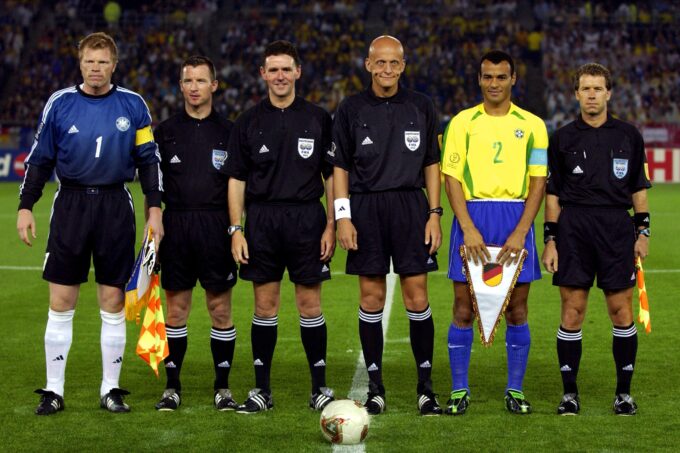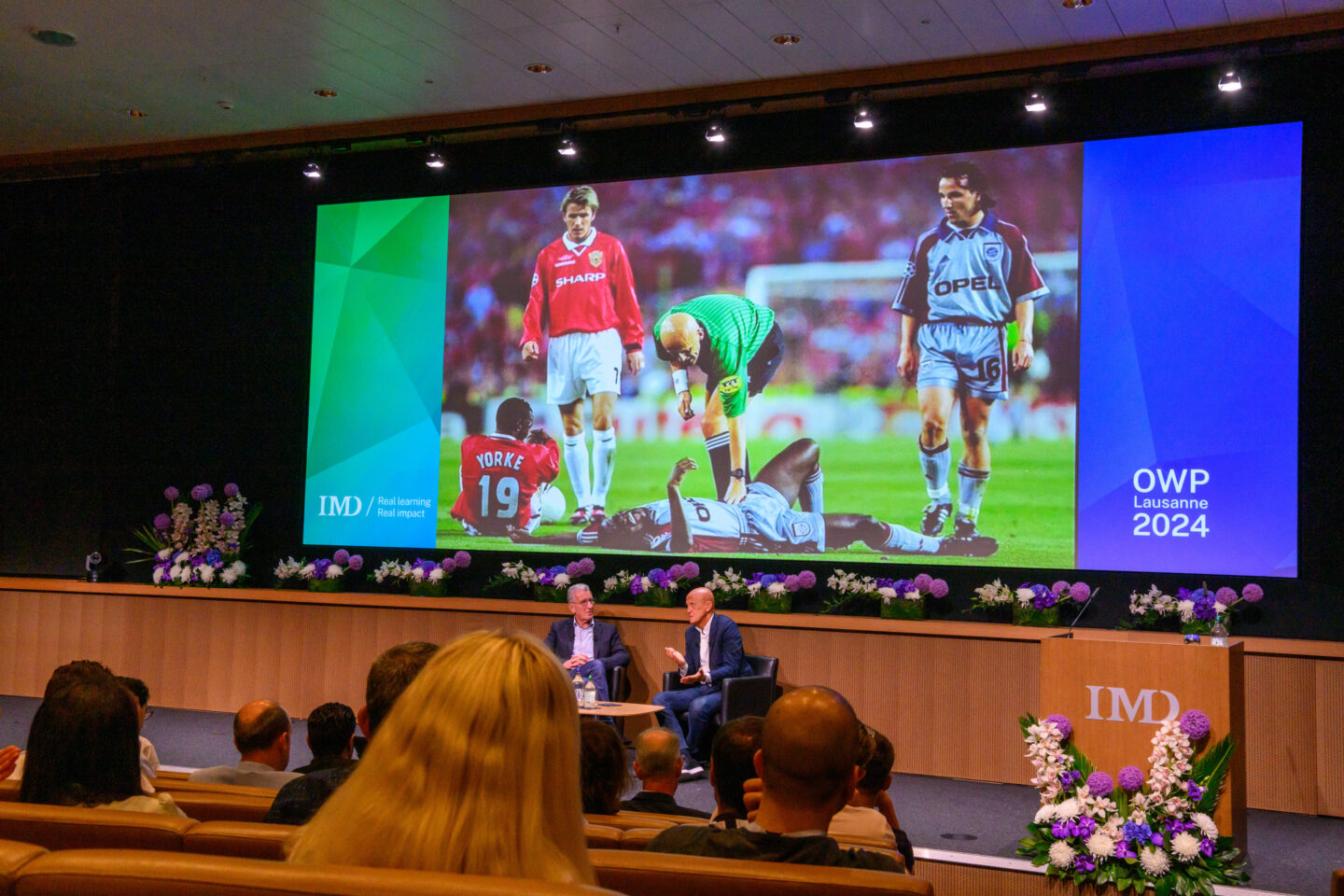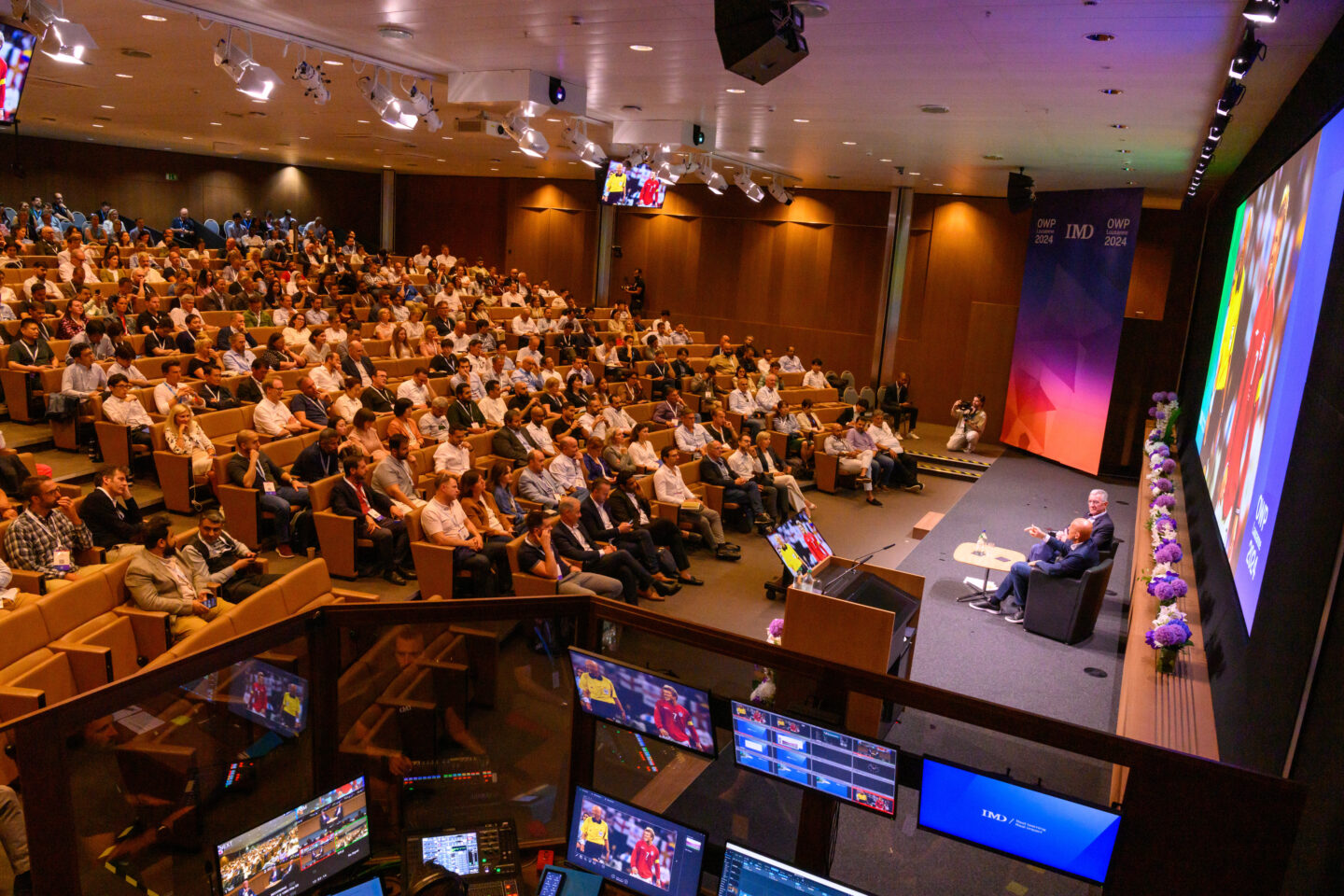
Turn geopolitical turmoil into transformational capacity
Rather than choosing between crisis mode and future planning, leaders should learn to focus simultaneously on both short and long-term goals....
June 28, 2024 • by Pierluigi Collina in Leadership
The world’s most famous referee Pierluigi Collina shares his insights into how to make decision making under pressure...
If you want to be a top manager in any big company, you have to learn to make decisions under pressure. And there is no better apprenticeship, in my opinion, than being a referee.
Whereas business leaders are often given some time to make a difficult decision, the best referee is always one who makes a split-second decision on the big calls. When 90,000 people are shouting at you in the stadium (not forgetting the millions at home who are screaming at their TV sets), you must be decisive. Hesitating for too long gives the impression of uncertainty, opening the floodgates to complaints from players and fans.
So, how do you learn to block out the noise, stay focused, and take controversial decisions? Like anything in life, it comes from hard work and preparation: knowing everything about what you are going to do is crucial to make the correct decision. Here are my tips from my extensive experience on the football field.
In my experience, it helps to be nervous if you want to perform at the top of your game. The important thing is that nerves don’t cross over into anxiety, which will impede your performance. In my early days in the profession, a famous Italian referee told me how before a match he would take a short nap for 20 minutes on a massage table. I tried this the next day, and it was my worst-ever performance. I was too relaxed. For me, nerves provide the adrenaline needed to drive results.
As a referee, you don’t just need to be fit and know the rules of the game. You can only make the best decisions if you know everything about the match beforehand – the style of play and tactics of the teams and individual players, for example. After all, much of what will happen on the field is predictable if you do your homework. This helps you to be in the best position possible to make a good decision, and even anticipate what will happen. The same is true for business leaders. You need to absorb as much information as you can about the market, your customers, and your stakeholders so that when you need to make a quick decision, you are coming from an informed position.
Although we can do everything to be very well prepared, we will still make mistakes. Even the best players in the world make them; they miss a penalty in a World Cup final. If I were to have made a wrong call in the Champions League final and it had cost the team the trophy, it would have killed my career and had wide-ranging implications. Let’s not forget that many top football clubs today are companies. Some are even listed on the stock market. A bad decision that leads to relegation could have a massive impact on the fortunes of both the club and the players.
Yet I know there are very few mistakes that are truly career-ending. As German philosopher Friedrich Nietzsche said: “Out of life’s school of war – what doesn’t kill me makes me stronger.” Most of the time mistakes are opportunities; a chance to learn, grow, and improve for next time. Importantly, if you make a mistake during the match, forget it immediately. It will only hurt your performance if you dwell on what happened for too long. After the match, you can analyze it to understand why you committed it in the first place and avoid repeating it in the future. Then forget it, because during the next match, you need a positive mentality. That’s why when anyone asks me, “What was the biggest mistake you ever made?” I always say, “Sorry, I forgot.”


“Most of the time mistakes are opportunities; a chance to learn, grow, and improve for next time. ”
We will all make mistakes, so the best thing that can happen to you as a referee is when others accept your decision, even when you’re wrong. This is a sign of trust and mutual respect. If you frequently get it right on key decisions, others will back you even when you make a mistake. The way you can build trust is by being yourself. When I refereed a match, I always reacted the way I felt in the moment; there was no filter. If you play a role or follow a script, you will be immediately uncovered as inauthentic. I recall refereeing a UEFA Euro 2004 match between England and Turkey. England captain David Beckham missed a penalty and was taunted by Turkey’s Alpay Özalan, who poked Beckham in the face as the two players walked off at half-time. I invited both men to my dressing room to speak to me and clear the air. The conversation reset the mood and the rest of the game was easy. When I spoke with Beckham years later, he told me what impressed him most at the time was not my words but the fact that my head was steaming in the cold December air. I was not putting on an act. They felt it and that earned respect.
During my career as a referee, we didn’t have VAR technology to assist us with making on-field decisions at critical junctures in a match. The irony was that a game would be covered by 20-odd different cameras, but the person on the pitch couldn’t always see what was happening. This has changed today with referees having the chance to watch the same angles on the monitor as viewers see at home. Yet football will never be a perfect game. There will be some factual decisions, but the majority of calls are matters of interpretation. Today, part of my job as Chairman of the FIFA World Cup Referees Committee is to build consistency in decision-making among referees, particularly since officials come from different countries with different styles of playing the game.

“The best thing that can happen to you as a referee is when others accept your decision, even when you’re wrong. This is a sign of trust and mutual respect.”
As a referee, you make a lot of sacrifices spending time away from family and loved ones to take part in top tournaments. You work hard but it’s also a privilege to be on the field for these memorable matches. A question I am often asked is if I make a mistake and give a bad call to one team, I try to compensate for it by being lenient to the other team on another decision. This appeals to our basic human instinct for fairness. However, every referee’s performance is judged by the number of mistakes they make in a game. Therefore, if you try to balance one mistake with another you are jeopardizing your final performance. One of the most important ingredients for decision-makers is self-confidence. If you keep a tally of mistakes and try to compensate for them, you will jeopardize your overall ability to make clear and courageous decisions.
This article is inspired by a keynote session at IMD’s signature Orchestrating Winning Performance program, which brings together executives from diverse sectors and geographies for a week of intense learning and sharing with IMD faculty and business experts.

Italian former association football referee

July 22, 2025 • by Katharina Lange in Geopolitics
Rather than choosing between crisis mode and future planning, leaders should learn to focus simultaneously on both short and long-term goals....

July 17, 2025 • by Mark J. Greeven in Geopolitics
China’s shift from reaction to reinvention is a long-running transformation built on policy foresight and internal restructuring that global turmoil and the tariffs war have only served to intensify....
 Audio available
Audio available
July 15, 2025 • by Martin Fellenz in Geopolitics
In volatile, fast-changing, and complex situations, received wisdom and expertise can become a liability that’s hard to overcome. Here are seven ways to change your mindset....
 Audio available
Audio available
July 10, 2025 • by Bruno Le Maire in Geopolitics
Former French finance minister Bruno Le Maire says Europe needs to act urgently to secure its supply of semiconductors or face relegation to the global slow lane. ...
 Audio available
Audio availableExplore first person business intelligence from top minds curated for a global executive audience